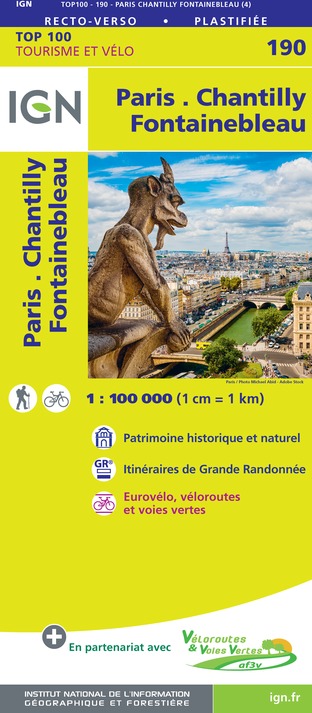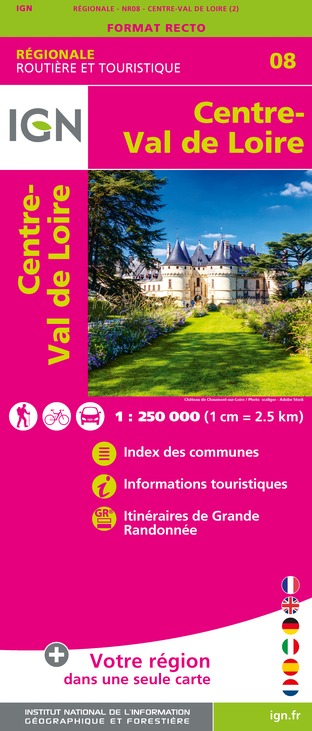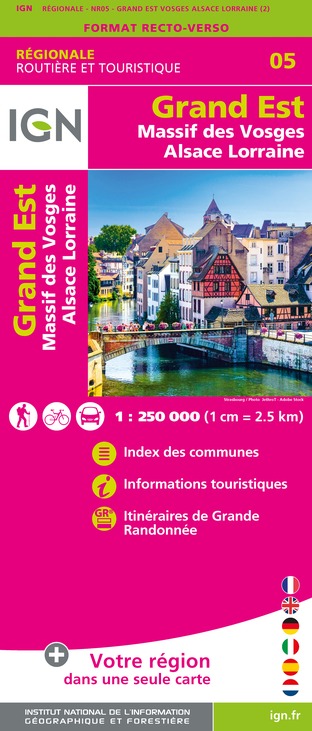Alert
Alerts
Type of practice
Walking
Very easy
1h45mn
Presentation
Map
Points of interest
Cirkwi brief's
Ratings and reviews
See around
Walk in Champeaux



Credit : Yves Lagües-Baget
The Cirkwi brief
Discover Champeaux: A Journey Through History and Nature
Embarking on a journey through Champeaux offers more than just a walk; it presents an opportunity to tread through history and nature harmoniously intertwined. The route, crafted by the Communauté de Communes Brie des Rivières et Châteaux, leads adventurers from the majestic Collégiale Saint-Martin, a beacon of medieval theological study, to the serene pathways beside the ru de l’Ancœur. As you traverse, the essence of Champeaux's past whispers, with each step revealing the craft of bygone eras and the untouched beauty of the landscape. This village, a crucible of heritage and culture, encapsulates the soul of the Brie region, making each visit a profound encounter with history.
Brief Technical Overview of the Route
Spanning a distance of 3.6 km, this leisurely trail is marked by a minimal elevation change, fluctuating between 85 to 99 meters. The journey from start to finish is estimated to take approximately 1 hour and 15 minutes, accommodating walkers of all paces. With no specific trail markers, participants are encouraged to follow the detailed directions provided, ensuring a seamless exploration of Champeaux's landmarks. This undemanding route, with a total positive elevation of 40 meters, offers an inclusive experience for enthusiasts seeking both historical insight and natural beauty.
Seasonal Advice for Champeaux Explorers
Regardless of the season, Champeaux’s trail offers unique charms. During spring, the blooming flora around the Château d’Aunoy and Collégiale Saint-Martin creates a picturesque backdrop for hikers. Summer presents an ideal time for extended explorations, with longer daylight hours illuminating the path. However, it’s advisable to carry water and sun protection. Autumn brings a cascade of colors, transforming the route into a mosaic of golds and reds, perfect for photography. In winter, while the trail remains accessible, ensure to wear appropriate footwear for potentially slippery paths. Always check weather conditions ahead of your visit.
Cultural Heart of the Brie Region
Champeaux, nestled within the scenic Brie region, stands as a testament to enduring historical and cultural significance. The highlight, the Collégiale Saint-Martin, is not merely an architectural marvel but a beacon of theological and educational advancement from the Middle Ages. This small yet pivotal village served as a crossroads in the Val d’Ancœur, evidencing the rich tapestry of France’s historical evolution. The juxtaposition of ancient heritage sites against the backdrop of the picturesque Brie landscape underscores Champeaux's vital role in French cultural and historical narratives.
Optimum Season for Champeaux Visits
The climate in the Champeaux region is generally mild, characterized by distinct seasonal changes that each bring their own charm to the landscape. The optimal time for visiting is late spring through early autumn, when temperatures are pleasant, and the risk of adverse weather is lower. This period allows for the full appreciation of the natural and architectural beauty that Champeaux has to offer. Whether it's the vibrant bloom of spring or the gentle warmth of autumn, each season in Champeaux creates a unique and memorable experience for visitors.
Embarking on a journey through Champeaux offers more than just a walk; it presents an opportunity to tread through history and nature harmoniously intertwined. The route, crafted by the Communauté de Communes Brie des Rivières et Châteaux, leads adventurers from the majestic Collégiale Saint-Martin, a beacon of medieval theological study, to the serene pathways beside the ru de l’Ancœur. As you traverse, the essence of Champeaux's past whispers, with each step revealing the craft of bygone eras and the untouched beauty of the landscape. This village, a crucible of heritage and culture, encapsulates the soul of the Brie region, making each visit a profound encounter with history.
Brief Technical Overview of the Route
Spanning a distance of 3.6 km, this leisurely trail is marked by a minimal elevation change, fluctuating between 85 to 99 meters. The journey from start to finish is estimated to take approximately 1 hour and 15 minutes, accommodating walkers of all paces. With no specific trail markers, participants are encouraged to follow the detailed directions provided, ensuring a seamless exploration of Champeaux's landmarks. This undemanding route, with a total positive elevation of 40 meters, offers an inclusive experience for enthusiasts seeking both historical insight and natural beauty.
Seasonal Advice for Champeaux Explorers
Regardless of the season, Champeaux’s trail offers unique charms. During spring, the blooming flora around the Château d’Aunoy and Collégiale Saint-Martin creates a picturesque backdrop for hikers. Summer presents an ideal time for extended explorations, with longer daylight hours illuminating the path. However, it’s advisable to carry water and sun protection. Autumn brings a cascade of colors, transforming the route into a mosaic of golds and reds, perfect for photography. In winter, while the trail remains accessible, ensure to wear appropriate footwear for potentially slippery paths. Always check weather conditions ahead of your visit.
Cultural Heart of the Brie Region
Champeaux, nestled within the scenic Brie region, stands as a testament to enduring historical and cultural significance. The highlight, the Collégiale Saint-Martin, is not merely an architectural marvel but a beacon of theological and educational advancement from the Middle Ages. This small yet pivotal village served as a crossroads in the Val d’Ancœur, evidencing the rich tapestry of France’s historical evolution. The juxtaposition of ancient heritage sites against the backdrop of the picturesque Brie landscape underscores Champeaux's vital role in French cultural and historical narratives.
Optimum Season for Champeaux Visits
The climate in the Champeaux region is generally mild, characterized by distinct seasonal changes that each bring their own charm to the landscape. The optimal time for visiting is late spring through early autumn, when temperatures are pleasant, and the risk of adverse weather is lower. This period allows for the full appreciation of the natural and architectural beauty that Champeaux has to offer. Whether it's the vibrant bloom of spring or the gentle warmth of autumn, each season in Champeaux creates a unique and memorable experience for visitors.
Automatically generated.
IGN cards

2416SB - MELUN MORMANT
Editor : IGN
Collection : TOP 25 ET SÉRIE BLEUE
Scale : 1:25 000
13.90€

119 PARIS SENS PNR DU GÂTINAIS FRANÇAIS
Editor : IGN
Collection : TOP 100
Scale : 1:100 000
8.40€

190 PARIS CHANTILLY FONTAINEBLEAU
Editor : IGN
Collection : TOP 100
Scale : 1:100 000
8.40€

D75-95 ÎLE-DE-FRANCE OUEST
Editor : IGN
Collection : CARTES DÉPARTEMENTALES IGN
Scale : 1:150 000
5.90€

D77 SEINE-ET-MARNE
Editor : IGN
Collection : CARTES DÉPARTEMENTALES IGN
Scale : 1:150 000
5.90€

NR08 CENTRE-VAL DE LOIRE
Editor : IGN
Collection : CARTES RÉGIONALES IGN
Scale : 1:250 000
6.80€

NR05 GRAND EST RECTO/VERSO MASSIF DES VOSGES ALSACE LORRAINE
Editor : IGN
Collection : CARTES RÉGIONALES IGN
Scale : 1:250 000
6.80€

NR03 ÍLE DE FRANCE
Editor : IGN
Collection : CARTES RÉGIONALES IGN
Scale : 1:250 000
6.80€

NR04 - GRAND EST RECTO/VERSO ARDENNE CHAMPAGNE
Editor : IGN
Collection : CARTES RÉGIONALES IGN
Scale : 1:250 000
6.80€

EUROPE
Editor : IGN
Collection : DÉCOUVERTE DES PAYS DU MONDE IGN
Scale : 1:2 500 000
7.00€
Technical Information
Walking
Difficulty
Very easy
Duration
1h45mn
Dist.
4.9 km
Type of practice
Walking
Very easy
1h45mn
Show more
Altimetric profile
Starting point
5
5 Place du Cloître
,
77720
Champeaux
Lat : 48.583437Lng : 2.806594
Points of interest
Data author
Ratings and reviews
To see around










